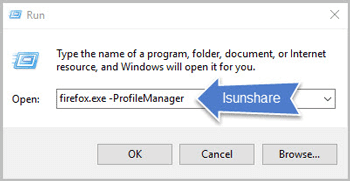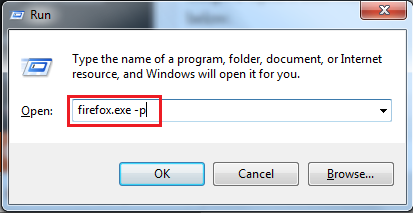
This name is not exposed on the Internet.


Use a profile name that is descriptive, such as your personal name. Click Next and enter the name of the profile.In the Profile Manager, click Create Profile.Close all instances of Firefox or restart the computer and then try again.Īfter starting the Profile Manager as explained above, you can create a new, additional profile as follows: If the Profile Manager window still does not open, Firefox may have been running in the background, even though it was not visible. The Firefox Profile Manager (Choose User Profile) window should open. Alternatively, you can use -ProfileManager instead of -P. Click the Firefox menu at the top of the screen and select Quit Firefox. If Firefox is open, close Firefox: Click the Firefox menu and select Exit.If Firefox is already included in your Linux distribution or if you have installed Firefox with the package manager of your Linux distribution: Note: You may need to adjust these instructions if Firefox is installed in a non-default location (for example, when multiple installations exist). Start the Profile Manager when Firefox is closed Launch profile in new browser When you click this, another Firefox window will open using that profile.Click this to make Firefox use this profile by default at startup. Set as default profile This option allows you to switch profiles.See the Removing a profile section below for more information. (The profile in use cannot be deleted.) Don't Delete Files is the preferred option. Remove Click this to delete a profile.Note: This does not rename the folder containing the files for the profile.

Rename Click this to change the name of a profile in the Profile Manager.To manage profiles, find the profile you want to change and choose from these buttons underneath that profile: The new profile will become the default and will be used the next time you start Firefox. After you finish creating the new profile, it will be listed in the Profile Manager. Create a New Profile Click this and follow the prompts in the Create Profile Wizard (see the Creating a profile section below for details).The About Profiles page includes the following options: The Local Directory stores the disk cache and other temporary data. Further support is available at : The Root Directory stores user profile data such as bookmarks, passwords and preference settings. This setting is reached with firefox -ProfileManager -no-remoteĪs noted in the question you referred to.įor more information on the command switches available for firefox see man firefox or the Ubuntu manpages online. You can also get prompted each time for which profile to use by making sure 'don't ask at startup' is unchecked, which is in the firefox ProfileManager settings below. This is because it can get confusing if you are using different profiles and you start firefox as normal without using a special shortcut and it just loads the last profile used. Something else I recommend is going to your firefox folder ( mine is /home/mike/.mozilla/firefox) and checking that the StartWithLastProfile setting in profiles.ini is false: If you wanted to do it manually, the desktop shortcut would look something like this you could create it in a text-editor and name it sktop: Įxec=firefox -Profile /home/mike/.mozilla/firefox/55divdmr.Mike2 -no-remote This will launch firefox with that profile and make sure that it doesn't connect to any other running instance of firefox with the essential -no-remote switch. The command you need for each launcher is, for example: firefox -Profile /home/mike/.mozilla/firefox/55divdmr.Mike2 -no-remote You can use your menu launcher creator (or right click the desktop and select new launcher, depending on what desktop you are on) to fashion two new firefox launchers.


 0 kommentar(er)
0 kommentar(er)
